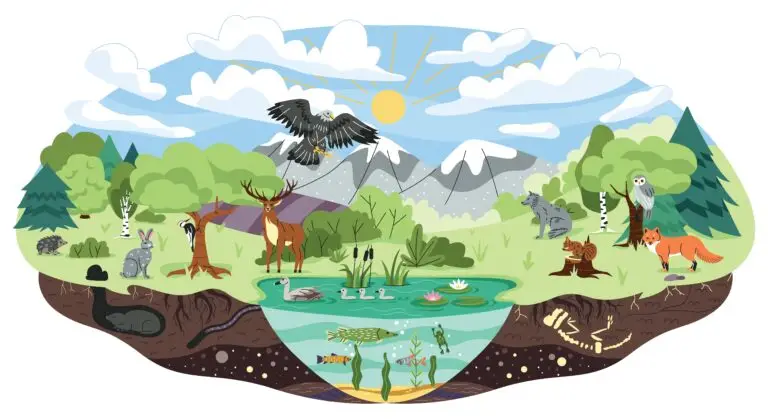Ecosystem

Table of Contents
Ecosystem Overview
An ecosystem is a biological community of interacting organisms (biotic components) and their physical environment (abiotic components) within a defined space.
Ecosystems can vary in size, ranging from small microenvironments to vast landscapes, and they can include diverse habitats such as forests, grasslands, wetlands, deserts, and aquatic systems. Ecosystems are characterized by the flow of energy and the cycling of nutrients through the living and non-living components.
Components of an Ecosystem
Biotic Components
- Producers: Organisms, typically plants or photosynthetic bacteria, that produce their food through photosynthesis, converting sunlight into energy.
- Consumers: Organisms that obtain energy by consuming other organisms. Consumers include herbivores (eat plants), carnivores (eat other animals), and omnivores (eat both plants and animals).
- Decomposers: Organisms, such as bacteria and fungi, that break down organic matter into simpler substances. Decomposers play a crucial role in nutrient cycling.
Abiotic Components
- Physical Environment: This includes non-living factors such as climate, soil, water, sunlight, temperature, and topography. These factors influence the distribution and characteristics of living organisms within the ecosystem.
- Chemical Environment: The chemical composition of soil, air, and water, including nutrients, minerals, and gases, is a critical component of the abiotic environment.
Energy Flow
Energy flows through ecosystems in a unidirectional manner, usually entering sunlight and being converted into chemical energy by producers through photosynthesis. Consumers obtain energy by feeding on producers or other consumers. Energy is transferred through the food chain or food web.
Nutrient Cycling
Nutrients, such as carbon, nitrogen, phosphorus, and others, cycle through the ecosystem. Decomposers play a key role in breaking down organic matter and releasing nutrients back into the environment.
Types of Ecosystems
Terrestrial Ecosystems: Forests, grasslands, deserts, tundras, and savannas are examples of terrestrial ecosystems found on land.
Aquatic Ecosystems: Oceans, rivers, lakes, ponds, and wetlands are examples of aquatic ecosystems found in water.
Related Links
What is an Ecosystem?
Biogenesis
Biome
Ecology